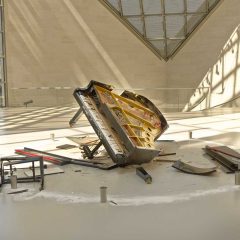[Katie takes an in-depth look at how rising housing costs are pushing some London artists to get creative, and live communally. — the Artblog editors]
London is an expensive city. Reports abound of broom-closets with toilets next to the bed going for exorbitant rates of rent, in a city plagued by homelessness and poverty. It is also home to a vibrant arts scene, with four major universities churning out batches of exciting young artists with wild ideas and a lot more drive than money.
The rise of a new community center
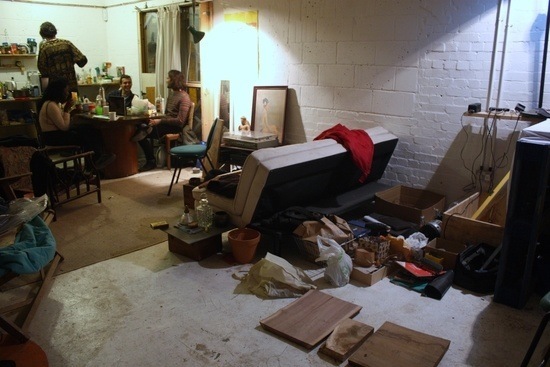
It’s no surprise, then, to find a thriving scene of artists taking over large warehouses in the city, to live and to work in. In the UK, it is now illegal to squat in residential properties, but commercial ones are still fair game. Inspired in part by the broad and optimistic aims of the Occupy movement, the group of young artists behind the new arts space named DIG in Lewisham first squatted in the impressive building, and then worked out a mutually beneficial contract with the owner.
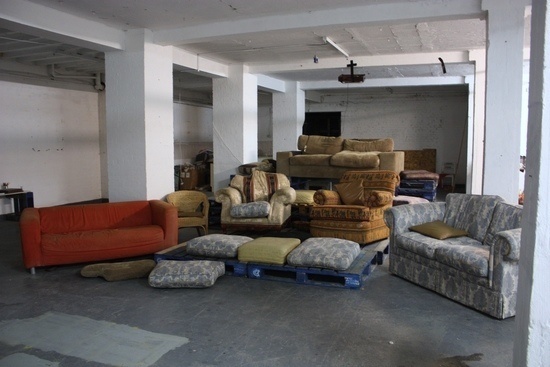
Organizer Josh Field explains, “It’s about reclaiming space. There are cornered-off areas of London that are consistently wasted, and a housing crisis at the same time. In those in-between moments when people aren’t using a space, it should be used for something. It’s almost our duty.
“This place is about avoiding the creative industries who don’t serve the purposes of the creators; they serve the purposes of the market. We wanted to start a community centre with a diverse mix of events welcoming in cross-context dialogues.” DIG has become a collaborative performance space in which events and projects mix into one another; Seb Silas tells of being surprised while practicing his saxophone by somebody dressed as an alien, asking where the fuse box was.
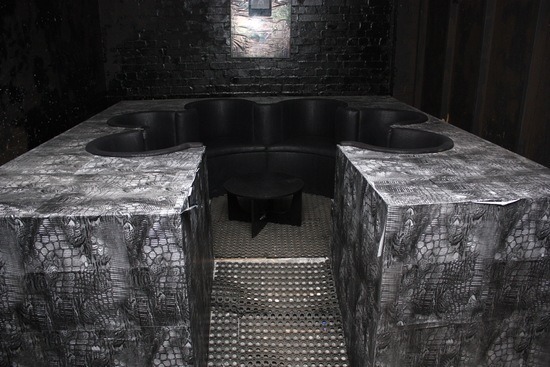
This is a space in which art, life, organization, and curation blend together. An installation by artist Joey Holder, above, occupies an entire room on the ground floor. Josh describes it as “a multi-functioning space–it’s not just an artwork, it also functions as a sitting room. How someone places their artwork in this space is not to place an object in a white cube. You’re linking to the space,” he says.
“Running this place is a creative endeavor in itself,” Josh further explains. “It’s not like we’re just putting a platform out; how we display their work is work in itself.” These living spaces can include really novel uses of space–capoerista Andrew lived for three years in a space that was “like a favela inside of a factory, three stories high and made of MDF, pretty impressive,” he says. “The neighbors had a swing in theirs.”
Risk and reward
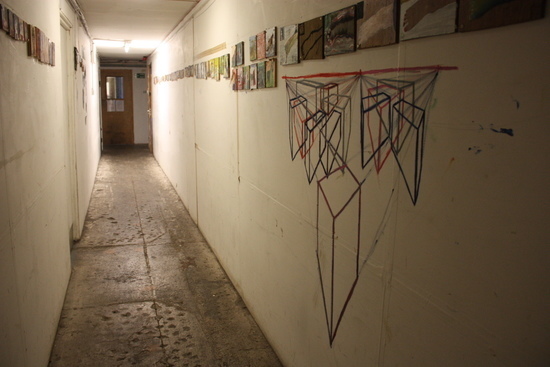
Photographer Oliver Goodrich lived in a couple of London warehouses over a period of several years, and is now engaged in a project about the inhabitants of Hackney Wick. He describes the varied culture. “When you live in a warehouse, you will usually be sharing the space with people working in a wide range of creative areas: a painter, a sculptor, a DJ and a graphic designer, for example. This mix is an exciting environment to be in, but it can put a lot of different demands on the space.”
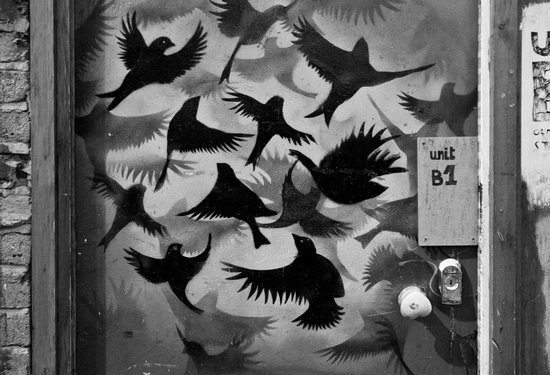
He expressed concern about the future of the more established warehouses, as areas become fashionable and profiles raise. “The rent’s going up. Landlords have realized that there’s a market for this and it’s attracted more people who’re there for the lifestyle. By raising rents and attracting a different demographic to the area, the landlords are drawing attention to a situation where they are not operating strictly legally.” As this recent article shows, that can lead to sudden mass homelessness.
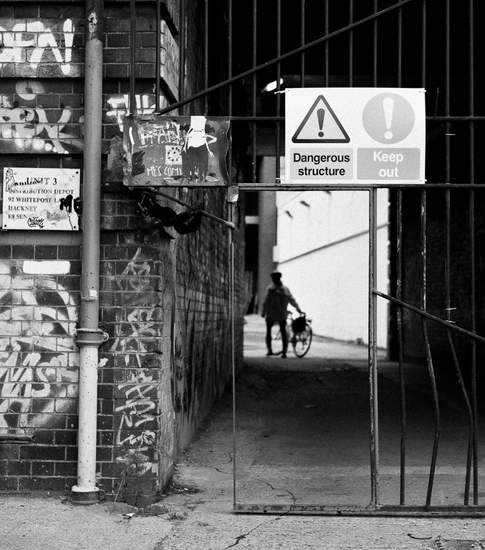
At times, however, the lack of legitimacy is an attractor. Events in warehouses are often “for friends by friends,” as I was told by Jay, who puts on events in spaces north of the river. That arrangement sidesteps issues of licensing and health and safety. “We have done them in ‘normal’ venues, but prefer the basement/warehouse feel, and being able to decorate how we want,” Jay says.
“Leave it open”
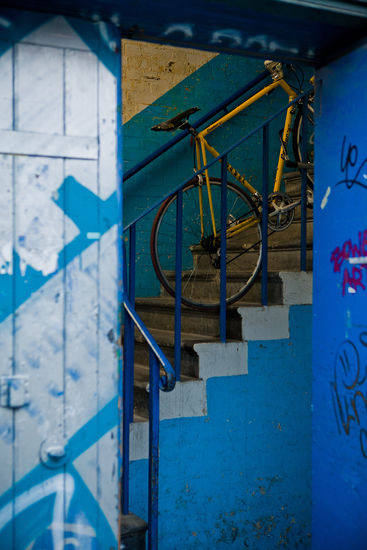
There are large and buzzing Facebook groups around some of the more established warehouses, in which resources are shared, events and furniture for sale advertised, and contacts made. Lee Clayden from DIG described the Internet as a fantastic tool in meeting others with similar aims, but noted that “the Internet’s taken away that idea of a physical space, a community for people to come and share ideas.” Organizing things in such a way that they’re only available to people in the know is somewhat problematic.
DIG’s Rhoda Boateng explains the approach they’ve taken. “We’re always aware that we want to be doing stuff that is open to the community as much as possible, but I think a problem when people try to run spaces that are community-orientated is that they’re trying to dictate what the community would like and want to see. Our idea is to leave it open, and that’s why we have a meeting that is for anyone to come and propose whatever they want.”
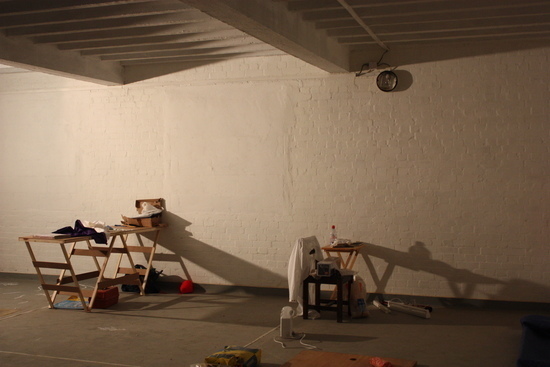
Oliver describes the warehouses as central to the culture of Hackney Wick. “The council and property developers have to recognize the value of that community to the area. If you drive away the artistic heart of the area and the existing community, then there’s no focus. It’s the community that makes it. ”
Andrew has the last word: “Warehouse communities give us an extended family. We live in close-knit social groups, like small villages interconnected through mutual projects, parties, and friendships. I can’t go back to normal living now. These days, I opt not to go in for top-down charismatic/hierarchical structures anymore, and look instead for more healthy group dynamics. It changed my life.”





